Local cuisine of Shimabara City
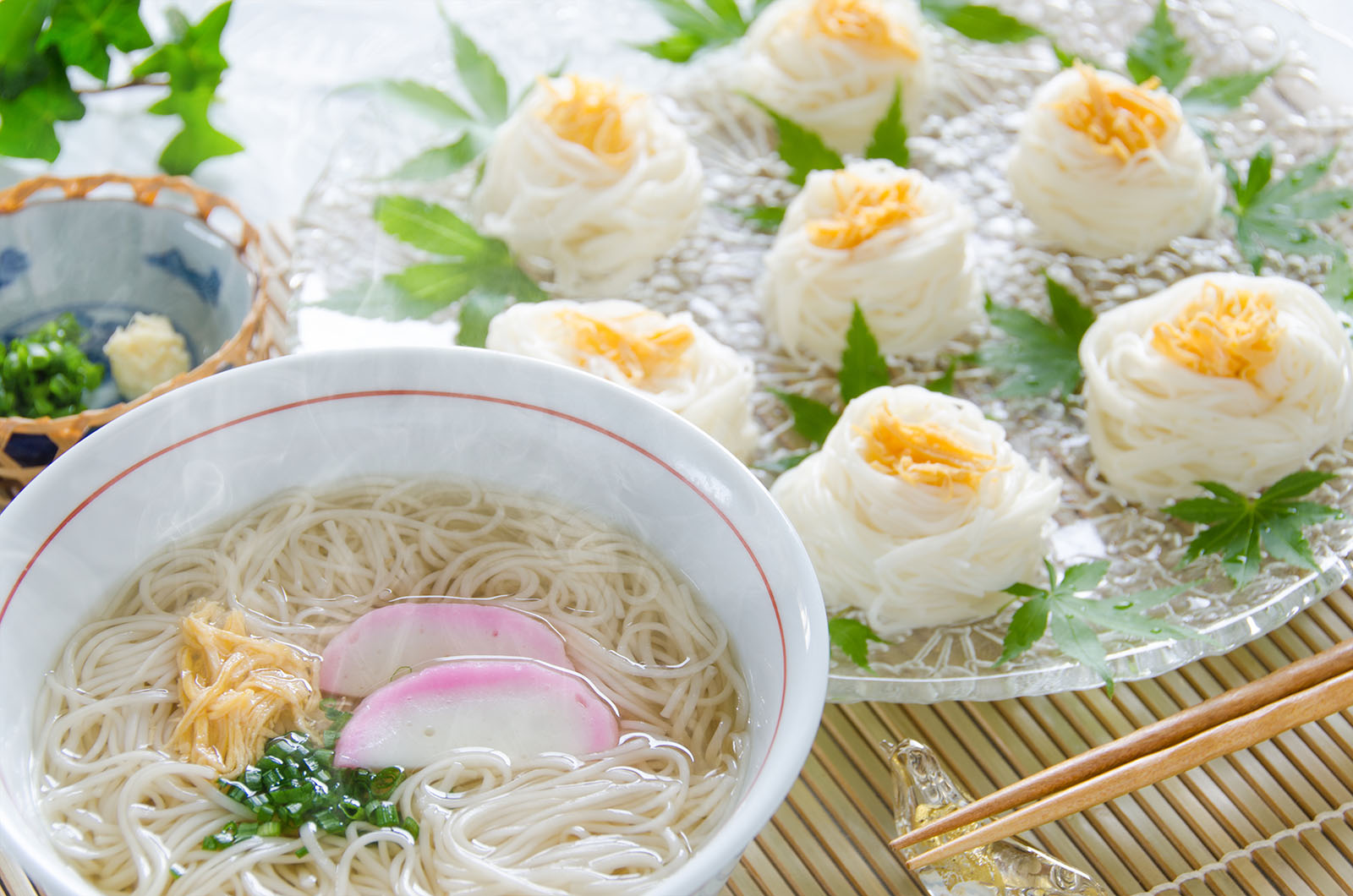
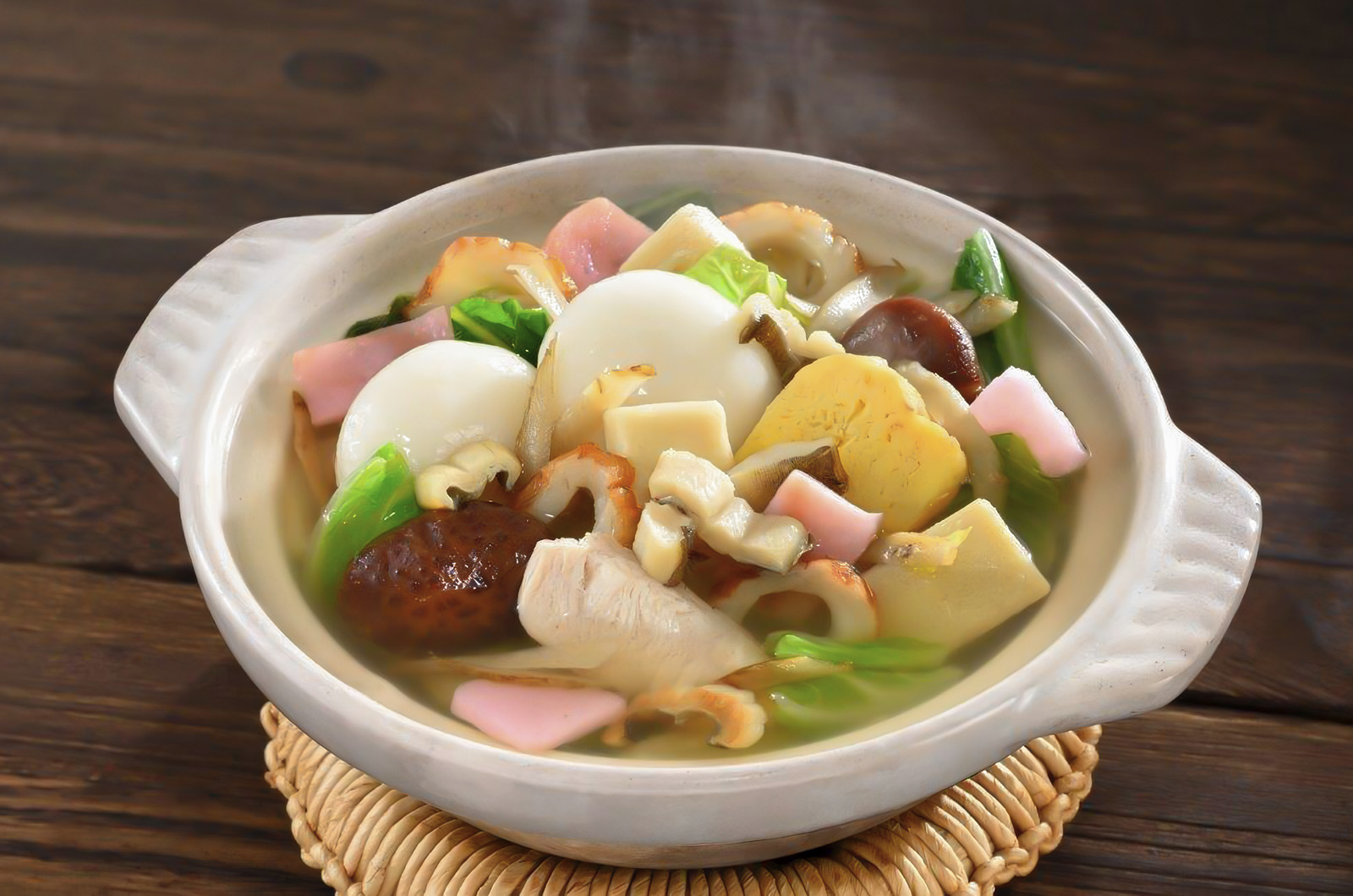

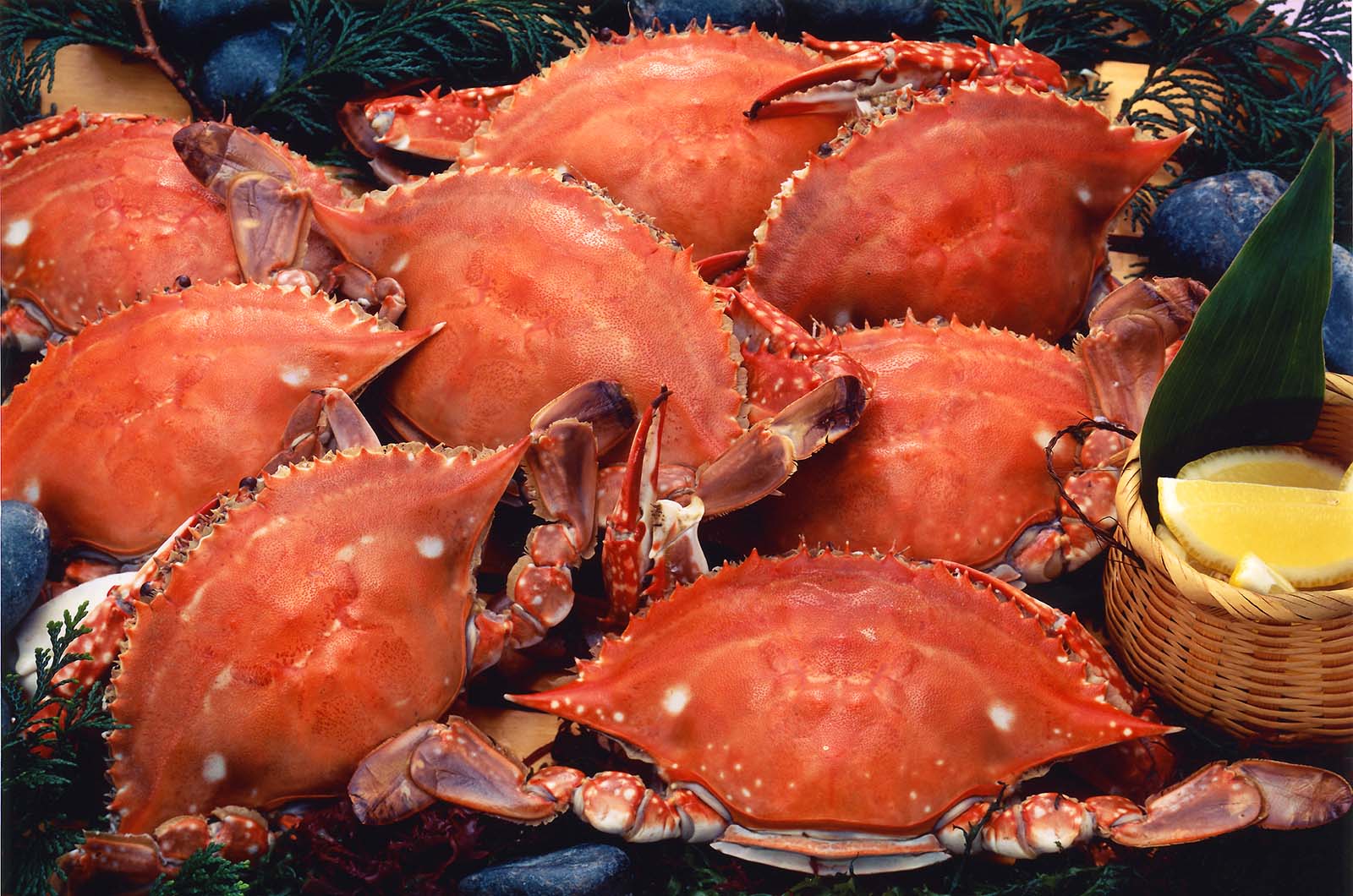
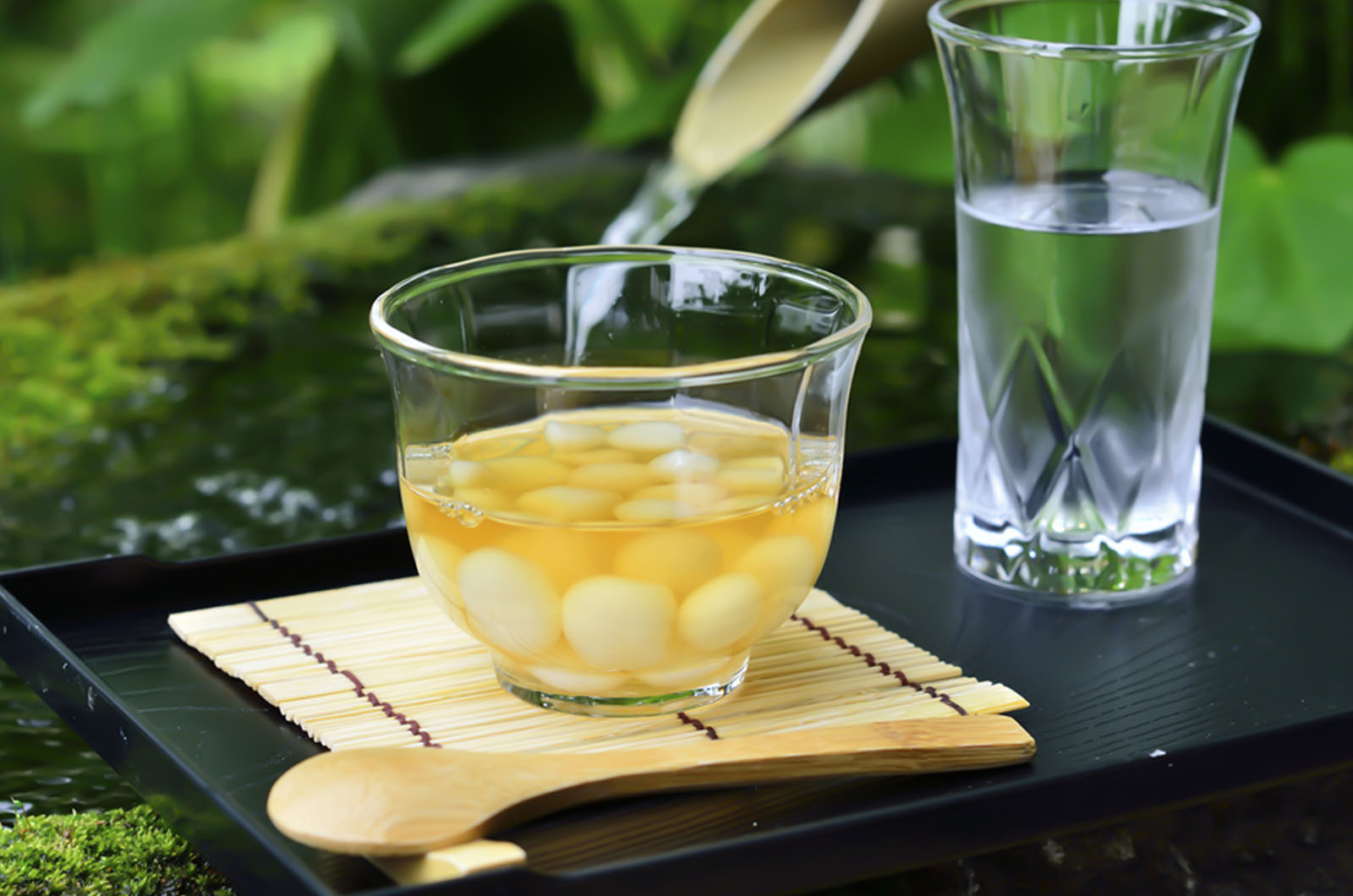
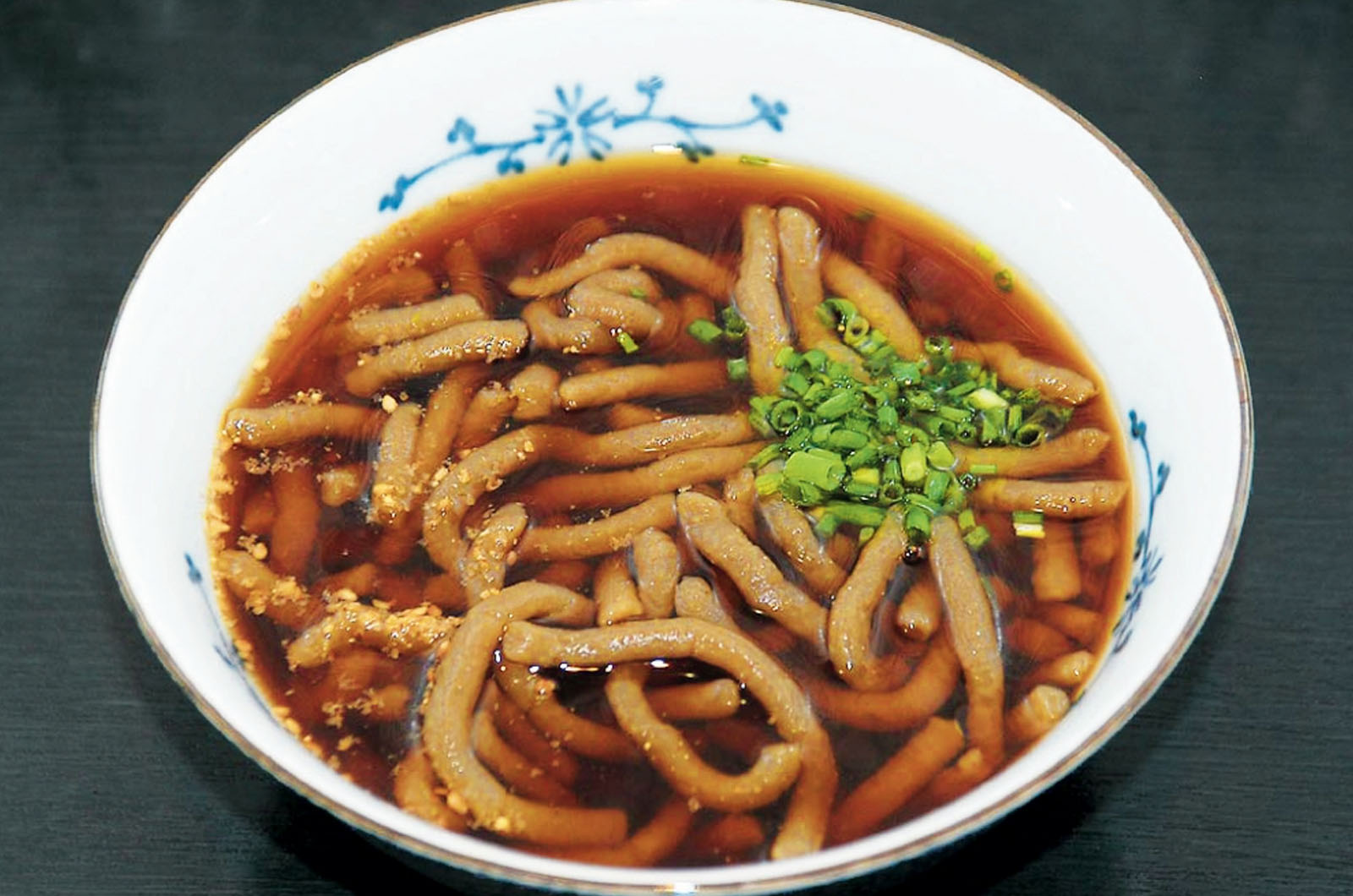









This page introduces the charm of local cuisine nurtured by the rich nature and history of Shimabara City. Simple yet deeply flavored, local cuisine is a product of local ingredients and traditional cooking methods. These dishes add color to Shimabara’s culinary culture and allow visitors to experience the richness of the local climate.
目次
- Hand-pulled somen noodles, a specialty of Shimabara
- Guzoni” is a typical local dish of Shimabara.
- Gamba (torafugu), an exquisite fish in both flavor and aroma
- Ariake Gane” representing Shimabara’s seafood
- Kanzarashi, dumplings made from spring water, a blessing of nature
- Rokubei, a local dish with a simple taste
- Igirisu, a simple local delicacy that is easy to get your hands on
Hand-pulled somen noodles, a specialty of Shimabara

Shimabara was once completely devastated by the Shimabara Rebellion, one of the people who emigrated from Shodoshima to rebuild the farming village was a master of handmade somen noodle making, however, a master hand-pulled somen maker, who was among the people who emigrated from Shodoshima for the reconstruction of the farming village, received the protection of the feudal lord, the Lord of the domain protected him, and he is said to have passed on his technique to the Shimabara region.
Blessed with high-quality flour from the rich farmland of the Shimabara region, spring water from one of the 100 best springs in Japan, and a mild climate, Shimabara’s somen noodles have a unique firmness and flavor, the noodles have a unique firmness and flavor.
Hand-pulled somen noodles are made from wheat, salt, cottonseed oil, and water. Each batch takes one to two days to make because of the ripening time required. Of course, carefully selected flour is used, each flour has its own characteristics, the traditional technique of Shimabara Hand-pulled Somen is to identify the flour and make the best use of its properties to produce the best quality somen.
Shimabara hand-pulled somen noodles are characterized by their firmness. It can be eaten cold or stewed, but it will not fall apart. Why don’t you try it and enjoy the taste?
Guzoni” is a typical local dish of Shimabara.

This guzoni was made during the Shimabara Rebellion of 1637, when Amakusa Shiro, the general of the revolt army, holed up in the castle with about 37,000 believers, he had the farmers store rice cakes as food for the army, it is said that he had the farmers store rice cakes as food for the army, and cooked zoni by gathering various ingredients from the mountains and the sea to nourish himself while fighting for about three months.
Zoni in Shimabara is characterized by stewing a large amount of vegetables and fish in a large pot. Each household uses its own soup stock, which often includes bonito broth, iriko (dried sardines), kashiwa (dried sardines), kago (dried sardines), kombu (dried sardines), and kago (dried sardines).
The dish itself is quite simple, as mentioned above, the ingredients include burdock root, lotus root, shirona, Chinese cabbage, shiitake mushroom, kashiwa (chicken), kamaboko, grilled sea eel, egg omelet, crown daisy, and frozen tofu, the broth blends well with the ingredients and brings out the umami flavor.
It is truly a culmination of the delicacies of the sea and the mountains. In 2007, it was selected as one of the “100 Local Dishes of Agriculture, Forestry and Fisheries Villages” by the Ministry of Agriculture, forestry and Fisheries, along with “Shippo-ryori”, or table cuisine.
Gamba (torafugu), an exquisite fish in both flavor and aroma

In the Shimabara dialect, fugu (blowfish) is called “Gamba”.
Because fugu is poisonous, the feudal lord of the Edo period (1603-1867) issued a ban on eating fugu,
Even so, there was no end to the number of people who ate the tasty globefish without regard for the risks involved. It is said that this is why the word “ganba” came to mean “I want to eat it even if I have to prepare a coffin with it.
In the Ariake Sea, tiger puffer fish from the Goto Sea and surrounding areas come to spawn in the winter from March to May. Spring is the peak season for pufferfish fishing in Shimabara Bay, and “ganba ryori” is a dish made from this pufferfish. Because of its delicious taste, farmed tora-fugu and Ariake Sea nasi-fugu have also started to appear on the market.
Cuisine
One of the local dishes is “Ganedaki”.
First, chop “ganba” into chunks, heat, roast from the bottom of the pan, and drain off the water. Season with soy sauce, sake or mirin (no sugar), add dried plums and garlic leaves, and simmer until all the liquid is absorbed. The flavor and aroma are both exquisite and unique to Shimabara.
Ganedaki” is a name given to the dish by the Yoshida family in their “Records,” *1 as it is said to have been served by Tadakazu Matsudaira, the last lord of the Matsudaira family, it is known that it has been popular since ancient times.(*1 Yoshida Sake Brewery in present-day Ariake-cho, Minamishimabara City)
Other types of ganba are sliced into thick slices, lightly salted, and then quickly dipped in boiling water,
The “yubiki” is also a delicacy. It is served with a sauce made of soy sauce, sake, and vinegar with dried plum paste and condiments such as grated momiji mushrooms.
Ariake Gane” representing Shimabara’s seafood

In Shimabara, crab is called “Gane”, it is a blue crab caught in the Ariake Sea. In the Shimabara Peninsula, it has long been known by this name. The season is from summer to autumn, but it can be enjoyed all year round and is very popular among tourists.
The Ariake Gane is very simple to cook, just boil plenty of water and enjoy the plump white meat from the base of the leg to the tip of the fish, making the roe a luxurious taste. “Tzake” is an indispensable way to eat Ariake gannet. Pour some hot sake into the shell and enjoy the first cup of tsuzake as it is, and from the second cup, melt the persimmon-colored “seki” as you savor it. Shimabara people swear that the taste is as good as king crab or hairy crab. We hope you will enjoy the delicious taste.
Kanzarashi, dumplings made from spring water, a blessing of nature

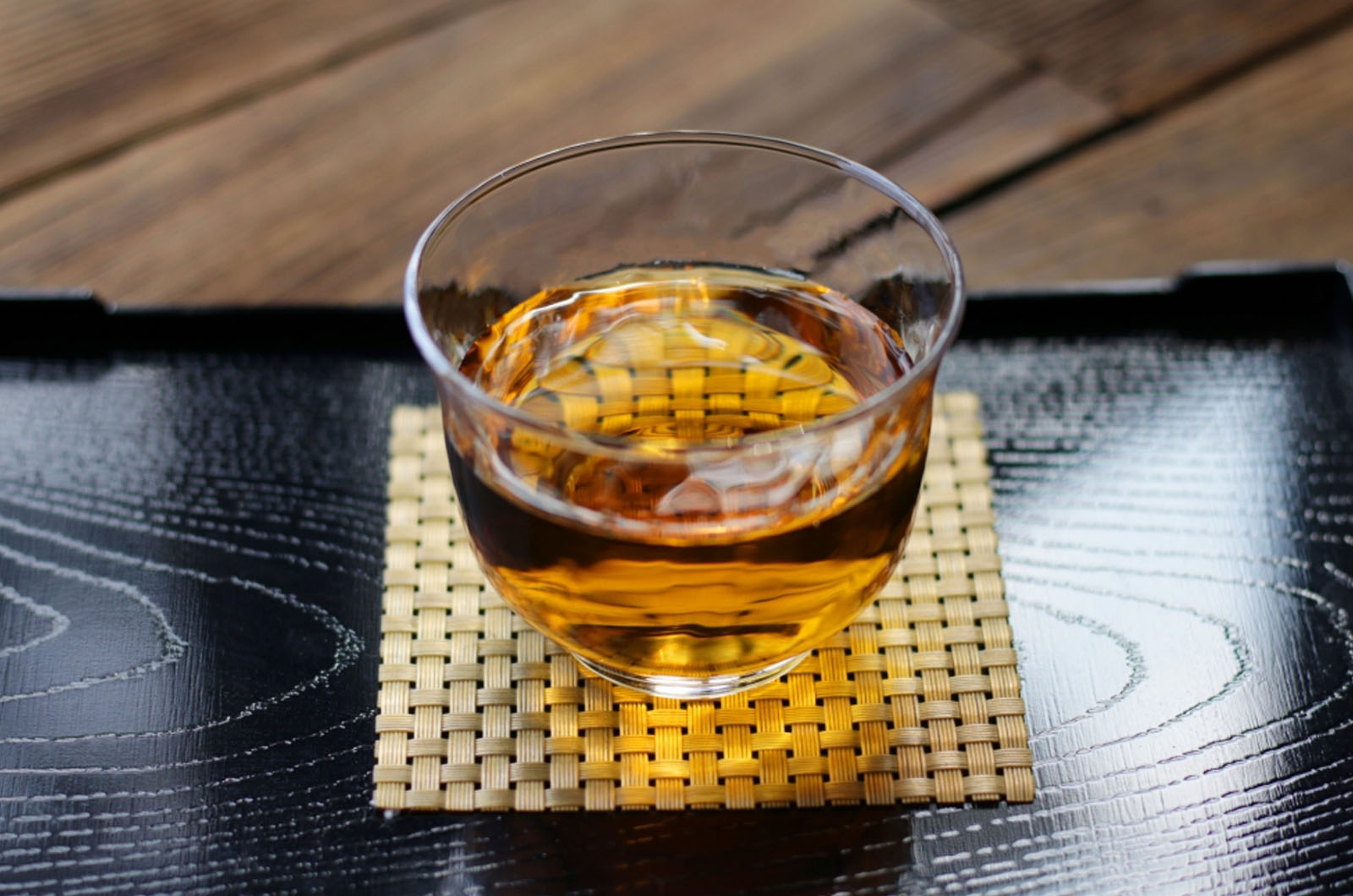


Kanzarashi is a sweet made by dipping white dumplings in a special honey.
Shimabara has many spring water spots and is commonly referred to as the “water city”.
Shimabara is also known as the “water city.” By using spring water from Shimabara to knead the flour, it is possible to make a biscuit that is both elastic and moist, the result is a texture that is both resilient and moist. We are particular about the flour as well, blending it with a base of shiratama flour to produce the most delicious dumplings. In Shimabara, it is also called “kanzarashi ko”.
At first glance, it looks like a confection that could be made in any region, but it has a taste and texture that can only be made in Shimabara, and has a history of becoming a local hospitality confectionery.
Special honey.
If you come to Shimabara and try Kanzarashi, you will be surprised. This is because the flavor of kanzarashi honey differs from store to store. Since the dumplings themselves are not flavored, the honey is what determines the taste of the kanzarashi. For example, “the honey has a sweetness that is not too strong, but goes down smoothly,” or “the honey has a rich color and taste, and the original sweetness of sugar and milky flavor stand out. You can enjoy the taste of honey in ten different ways.
History of Kanzarashi
In the past, rice was used to pay tribute as a tax, the rice used for tribute, which was a tax in the past, was not something the common people could easily eat, the only rice that could be eaten was the rice scraps that could not be collected as tribute.
If rice was stored for a long period of time, insects would eat it, the rice was milled with a stone mortar to make rice flour for preservation. In summer, rice dumplings were made from spring water and preserved in the spring water so that they would not spoil.
In addition, Shimabara (Kuchinotsu and Katsusa) used to be rich in sugar production. It is said that they used to make honey with it and serve “kanzarashi” as a summer treat. There are also records in literature of “samurai” eating it. In addition, because sugar production flourished in Shimabara, many of the local specialties and souvenirs are sweet confections.
Making Kanzarashi (sweet bean jelly) by hand
At “Shimabara Yusuikan (Koi Cafe Yusuikan)”, one of Shimabara’s sightseeing spots, you can try your hand at making kanzarashi Reservations are required for those who wish to try the handmade experience.
Rokubei, a local dish with a simple taste

Rokubei is a local dish of Shimabara City, a noodle dish made from sweet potatoes.
It has a long history, dating back to 1792, when the Shimabara Peninsula suffered a food crisis during the “Shimabara Rebellion, the sweet potato became the staple food in the area. At that time, a man named Rokubei from Fukae-mura (present Fukae-cho, Minami-Shimabara City) made sweet potato powder and made it into yam, it is said that the first udon noodles were made by a man named Rokubei in Fukae Village (present Fukae-cho, Minamishimabara City), who powdered sweet potatoes, added yams, and kneaded them in boiling water to make udon noodles.
The sweet potato flour is used as the ingredient, and the yam is used for the jump. It looks like thick buckwheat noodles, but has a sweet taste. The broth is a clear soup, and the taste is enhanced by adding green onions and shichimi (seven spice) to the broth. Although it was once a scarce food, it has been rearranged in a modern way to create a rustic taste that evokes nostalgia.
Rokubeh is also served at restaurants in Shimabara City. It is also easy to make at home, so please give it a try.
Igirisu, a simple local delicacy that is easy to get your hands on

In the southern part of Shimabara, facing the Ariake Sea, during the high tide in June, the tide recedes and the local people go out to the sea to eat igirisu, when the tide recedes, you can catch igirisu, a dark dark red seaweed attached to rocks. Immersed in water from the feet to the waist, it is easily removed from the rocks with a metal “paddle. Igisu is longer than tengusa and has a pleasant crunching sensation when touched.
After the Shimabara Rebellion, people from Shikoku immigrated to the area around Imabari, and this is the origin of igisu (dried squid) tofu. When dried igisu is soaked, a loaf is reduced to about 40 monme. Put 5 cups of fresh rice bran from Uruchi rice into a cloth bag, and wash 40 monme of Igisu with the first bran juice, after which the water is squeezed out and the second bran juice is added to the bag. Squeeze out the water, add 2 squares of the second bran, and knead over a fire. Add the bran juice a little at a time, and cook the Igisu in the Uruchi-nuka juice for about 30 minutes to dissolve.
Cut carrots, kikurage mushrooms, shiitake mushrooms, and fish into small pieces and cook in sugar and soy sauce. Wrap and pound roasted peanuts, and also prepare tofu cut into small pieces. When the Igisu has melted and thickened, add the ingredients and the broth, season to taste, knead for 10 minutes, sprinkle with green onions, and pour into a sink to harden. It is a local delicacy with a delicious filling and a smooth taste.
White girisu without garnish is used for Buddhist rites, and is cut into thin slices and eaten with sesame soy sauce or white sauce. Algae girisu (egonori) is made by removing the red flowers from the algae and cooking it in miso mixed with water.